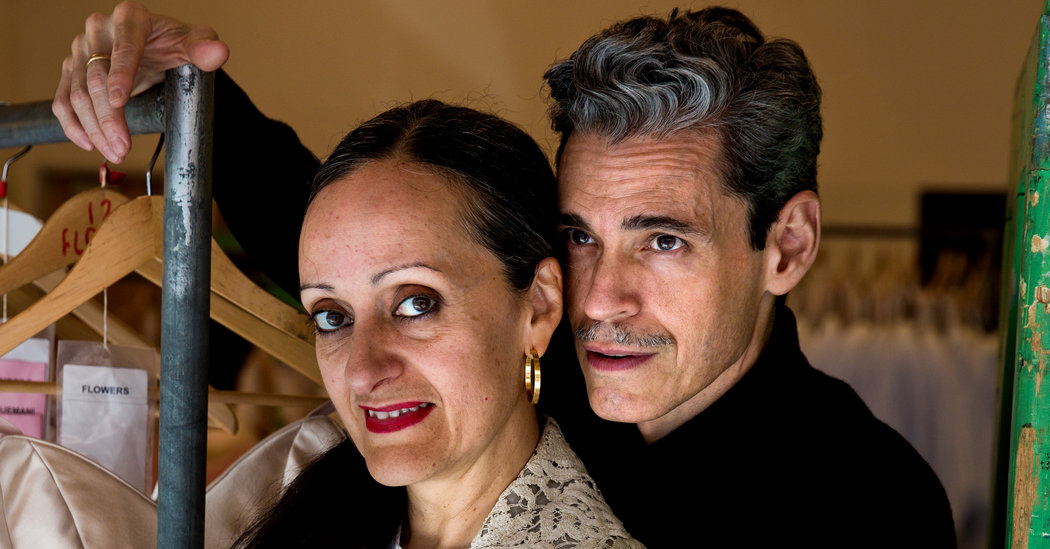
Late Monday afternoon, New York’s creative communities met in Hell’s Kitchen at the Baryshnikov Arts Center. There were writers and dancers, actors and musicians, from uptown and downtown, all drawn together by the memory of one woman: the designer Isabel Toledo, who died in August of breast cancer.
She was as close to an artist as fashion had — even if she was best known for designing Michelle Obama’s first inaugural parade dress and coat.
On a darkened stage illuminated by a white glow from a sewing machine and hanging ivory gown in one corner there came not only speeches (from Wendy Goodman, the journalist, and Kim Hastreiter, the Paper magazine co-founder and curator, and Michaela Angela Davis, the writer, among others), but also performances.
The dancer Jillian Davis, of Complexions Contemporary Ballet, extended her limbs in elegy accompanied by a violin played by Ezinma (late of Beychella). Caridad de la Luz, the spoken word poet known as La Bruja, unscrolled a river of paper on which she had scrawled, in looping black pen, her paean. Basil Twist, the puppeteer, flew a marionette like a fluttering spirit. Joey Arias, the performance artist, belted out a love song after telling an off-color story about farting.
Many of the speakers wore Ms. Toledo’s designs. Ms. Davis said she had on a dress Ms. Toledo made for her to wear to the People’s Ball at the first Obama inauguration; La Bruja said that she had taken her shoes, which Ms. Toledo had given her and which she had been saving, out of their box for the first and last time.
And in the end, Whoopi Goldberg read a letter of skin and blood from Ms. Toledo’s husband, the artist and illustrator Ruben Toledo, to his wife.
The visceral emotion in the letter was reflective of the tenor of the event, because as much as the afternoon was a homage to Ms. Toledo and her work, the gathered throng was also there to acknowledge one of fashion’s greatest love stories.
Mr. and Ms. Toledo were legend in an industry where individual ego and ambition often seem the norm and the relationships that are known tend to be fraught and soap-opera dramatic. Rarely, if ever, seen apart, the Toledos (they were always “the Toledos”) were each other’s muses, with an almost symbiotic need to create.
They were beyond, said the curator and retailer Katharina Sand, who had met the Toledos when she was a very young journalist, “Yoko and John, Morticia and Gomez.”
She realized “he was her missing link,” Ms. Goodman said.
James Kaliardos, the makeup artist, talked about a dream he had in which he couldn’t tell where Ruben stopped and Isabel began.
“He was the fabric, she was the needle, and they stitched it all together,” said Mr. Arias, who first met the Toledos when he was a salesman at Fiorucci.
Ms. Hastreiter, who knew the couple even before they were married, said that Mr. Toledo had often painted his wife, and she had raised the possibility of doing an exhibition of his portraits. She guessed, Ms. Hastreiter recalled, that he probably had about 1,000. He corrected her.
“More like 10,000 Isabels,” he said.
And as guests like Agnes Gund, the philanthropist, and Sandy Schreier, whose wardrobe has just gone on-show at the Met; the Cuban-American designer Narciso Rodriguez and Simon Doonan, the writer and former Barneys window dresser; Linda Fargo of Bergdorf Goodman and Ikram Goldman from Ikram in Chicago lined up to hug Mr. Toledo, who had been hovering in the shadows, the image that lingered was the last still from the final film of the afternoon (because there was film, too). It was a moment caught as Ruben and Isabel were dancing — they loved to dance and did a mean bossa nova — arm in arm in the loft where they lived.
They had just done a twirl, and she hadn’t yet quite come down to earth. Her dark hair was flying out behind her, and they were eye to eye, laughing.







